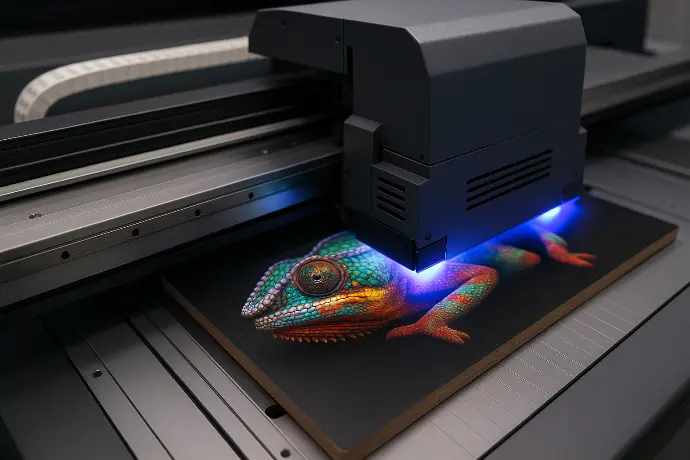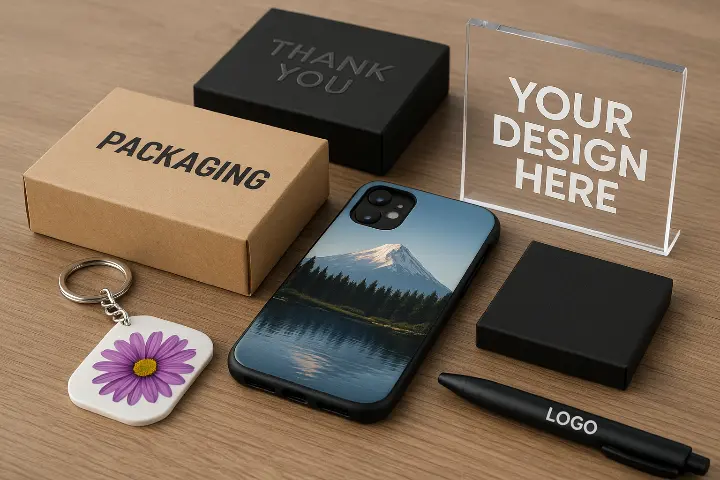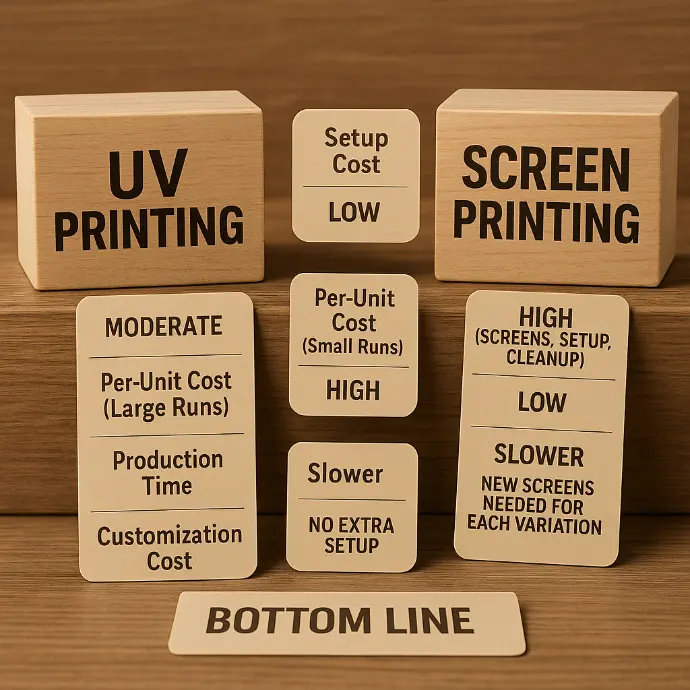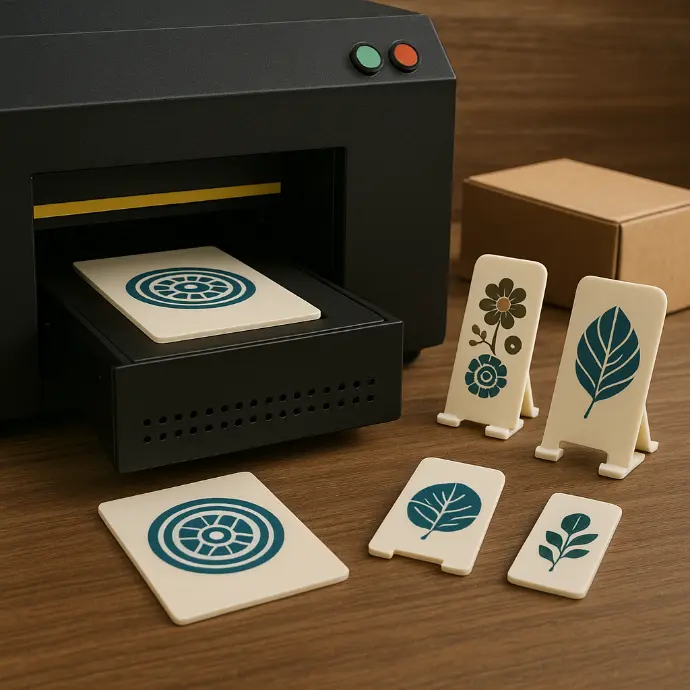If you sell custom products online — from apparel and packaging to promotional items — you know that print quality is everything. The way your designs look and feel directly affects your brand’s credibility and customer satisfaction.
But when it comes to production, one big question always arises:
Should you use UV printing or screen printing?
Both are proven, powerful printing technologies — but they serve very different needs. In this article, we’ll break down the pros and cons of each, show you where each method shines, and explain why UV printing is rapidly becoming the go-to choice for modern eCommerce sellers.
What Is Screen Printing?
Screen printing, also known as silk screening, is one of the oldest and most common printing techniques. It involves using a fine mesh screen and ink stencil to transfer designs onto materials like fabric, plastic, or paper.
Each color in the design requires a separate screen, meaning multi-color or gradient designs can be time-consuming to produce.
Screen Printing Basics

- Screen Creation: A mesh screen is coated with emulsion and exposed to light, hardening everything except the design area.
- Ink Application: Ink is pushed through the open areas of the screen onto the material.
- Drying & Curing: The printed item is dried to set the ink permanently.
This process has been a staple for decades — especially for bulk orders of t-shirts, tote bags, and simple branded items.
What Is UV Printing?
UV printing is a modern digital printing process that uses ultraviolet light to instantly cure (harden) specially formulated ink. Instead of soaking into the material like traditional ink, UV ink sits on the surface, producing vibrant colors, sharp details, and a durable finish.
UV printing can print on almost any flat surface — including metal, acrylic, glass, plastic, and wood — making it far more versatile than screen printing.
How It Works

- Digital Image Setup: The artwork is sent directly from a computer to the UV printer.
- Ink Application: The printer applies UV ink directly to the material.
- Instant Curing: Ultraviolet lamps cure the ink immediately as it’s printed.
No screens, no setup, no drying time — just fast, precise, and flexible printing.
UV Printing vs. Screen Printing: The Key Differences
Feature | UV Printing | Screen Printing |
Setup Time | Minimal — digital process | Lengthy — each color needs its own screen |
Material Options | Prints on almost any surface (acrylic, metal, wood, glass, etc.) | Works best on fabric and flat, smooth surfaces |
Color Quality | Photorealistic, full-color printing | Limited color blending; best for simple graphics |
Durability | Scratch-resistant, waterproof, UV light safe | Durable on fabric, but can fade or crack over time |
Environmental Impact | Low VOC, no solvents, less waste | Uses more ink and chemicals; less eco-friendly |
Cost Efficiency | Best for short runs and customization | Best for large batches of identical designs |
Texture & Finishes | Can create raised textures and gloss effects | Flat finishes only |
Turnaround Time | Instant curing = faster production | Requires drying and screen prep time |
When to Choose Screen Printing
Despite its limitations, screen printing still has a valuable place in the custom product world — especially for certain applications.
Best For
Apparel Printing - T-shirts, hoodies, and tote bags
Large Runs - Economical for bulk orders with simple designs
Bold Designs - Thick ink layers create vibrant, opaque prints
Limitations
Not cost-effective for small runs or highly detailed artwork
Each color requires a separate setup
Limited compatibility with non-fabric materials
Longer production times
In short -- if you’re printing hundreds of identical t-shirts, screen printing is efficient. But if your eCommerce model relies on customization, personalization, or multiple materials, it’s not your best option.
When to Choose UV Printing
UV printing is built for the on-demand, personalized nature of eCommerce. It offers a level of versatility and quality that traditional printing methods can’t match.

Best For
- Custom Merchandise: Keychains, phone cases, notebooks, and gifts
- Product Packaging: Boxes, labels, and tags with raised or gloss finishes
- Home Décor: Acrylic prints, signage, photo panels
- Corporate & Promotional Items: Branded giveaways and professional displays
Key Advantages for Online Sellers
- No Minimum Orders – Print one item or one thousand.
- Faster Turnaround – No drying or setup; perfect for drop shipping or small batch fulfillment.
- High-End Finishes – Raised textures, spot gloss, and white ink for dark materials.
- Eco-Friendly Printing – UV-curable inks are solvent-free and produce minimal waste.
- Durability That Lasts – Scratch-resistant, fade-proof, and water-safe.
For small businesses and online stores, UV printing is a game-changer — it combines premium quality with production flexibility, ideal for custom product lines.
Cost Comparison: UV Printing vs. Screen Printing
Let’s talk about what every eCommerce seller cares about — profit margins.
Cost Factor | UV Printing | Screen Printing |
Setup Cost | Low | High (screens, setup, cleanup) |
Per-Unit Cost (Small Runs) | Moderate | High |
Per-Unit Cost (Large Runs) | Moderate | Low |
Production Time | Fast | Slower |
Customization Cost | No extra setup | New screens needed for each variation |

BOTTOM LINE
Screen printing is best for high-volume, low-variation orders (e.g., 1,000 identical shirts).
UV printing is best for short-run, multi-design, or customized orders (e.g., 50 products, each with a different name or design).
For eCommerce sellers, where flexibility and personalization drive sales, UV printing usually delivers a better return on investment.
Real-World Example: The eCommerce Advantage
Imagine you run a Shopify store selling personalized phone stands and acrylic signs. With screen printing, you’d need to make separate screens for every name or design — slow, expensive, and impractical.
With UV printing, you simply upload your artwork files, and each item is printed on demand, instantly cured, and ready to ship.

This Model
Reduces inventory waste
Enables personalization
Speeds up fulfillment
Increases profit margins
That’s why print-on-demand and small batch brands are shifting to UV printing — it fits the modern eCommerce workflow perfectly.
Why Businesses Are Switching to UV Printing
At CutPrintShip, we’ve seen firsthand how UV printing has revolutionized custom product production for online sellers.

Businesses choose UV because it allows them to:
- Launch new products faster
- Offer personalization at scale
- Maintain consistent quality across materials
- Streamline operations with direct-to-product printing
Our UV printing systems deliver razor-sharp detail, full CMYK color, and advanced features like raised gloss textures — ideal for turning ordinary products into standout pieces.
Final Verdict: Which Is Better for E-Commerce?
Both UV printing and screen printing have their strengths — but for most modern eCommerce operations, UV printing clearly wins.
Category | Winner |
Quality & Detail | UV Printing |
Setup Time | UV Printing |
Material Compatibility | UV Printing |
Eco-Friendliness | UV Printing |
Bulk Apparel Runs | Screen Printing |
Customization & Personalization | UV Printing |
If your business thrives on creativity, customization, and quick turnaround — UV printing offers the speed, flexibility, and quality your customers expect.
Conclusion
In a competitive eCommerce world, choosing the right printing method is about more than just ink — it’s about scalability, efficiency, and brand perception.
While screen printing remains great for bulk apparel orders, UV printing is the future of custom product eCommerce. It’s faster, cleaner, more flexible, and capable of printing on nearly any material — perfect for the next generation of online brands.